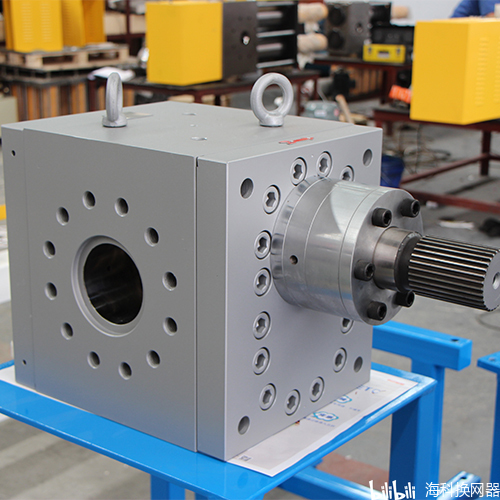CANCEL
(1) Failure phenomenon: the pump can not discharge material ;Failure causes
Failure causes: a. Rotating in the opposite direction; b. Suction or discharge valve is closed; c. Inlet no material or pressure is too low; d. Viscosity is too high, the pump can not bite the material
Countermeasures: a. Confirmation of the direction of rotation; b. Confirmation of whether the valve is closed; c. Check the valve and pressure gauge; d. Check the viscosity of the liquid to run at low speeds proportional to the speed of the flow rate is not appearing, if there is a flow rate, then the inflow is insufficient.
(2) Failure phenomenon: insufficient pump flow
Failure causes: a. Suction or discharge valve closed; b. Inlet pressure is low; c. Export pipeline blockage; d. Stuffing box leakage; e. Low speed
Countermeasures: a. Confirm whether the valve is closed; b. Check whether the valve is open; c. Confirm whether the discharge volume is normal; d. Tighten; when a large number of leakage leakage affects the production, it should be stopped and disassembled for inspection; e. Check the actual speed of the pump shaft;

(3) Fault phenomenon: abnormal sound
Failure causes: a. Coupling eccentricity or poor lubrication b. Motor failure; c. Reducer abnormal; d. Poorly installed at the shaft seal; e. Shaft deformation or wear
Countermeasures: a. Find the right or fill the grease; b. Check the motor; c. Check the bearings and gears; d. Check the shaft seal; e. Stop the car to dismantle the body for inspection
(4) Fault phenomenon: excessive current
Fault causes: a. Excessive outlet pressure; b. Excessive melt viscosity; c. Poorly assembled shaft seals; d. Worn shafts or bearings; e. Motor failure
Countermeasures: a. Check the downstream equipment and pipeline; b. Check the viscosity; c. Check the shaft seal and adjust it appropriately; d. Check after stopping the machine, and check if it is too heavy by hand coiling; e. Check the motor
(5) Failure phenomenon: pump suddenly stop
Failure causes: a. Power failure; b. Motor overload protection; c. Damaged coupling; d. Exit pressure is too high, the interlock reaction; e. Pump bite into the abnormal; f. Shaft and bearing adhesion jamming
Countermeasures: a. Check the power supply; b. Check the motor; c. Open the safety cover and check the disk; d. Check the instrument interlocking system; e. After stopping, forward and reverse rotation to confirm; f. Coil confirmation
Note: The above fault phenomena and countermeasures are one-to-one correspondence.
Heiko specializes in the manufacture of all types of melt pumps and screen changers.
Melt pump common faults and countermeasures
Functions and advantages of the hydraulic pelletising screen changer
Screen changer leakage phenomenon of different working conditions solutions
Melt Thermal Degradation in Relation to Melt Pump Structure
Melt booster pump jamming and end cap leakage
Features and technical advantages of melt-pumps for heat-sensitive materials
Overview of Hydraulic Screen Changer Technology
Structure and working principle of high temperature melt-pump
How do you change the screen on an automatic screen changer?
What factors does consider, choosing hydraulic screenchanger of PVC pelletizing